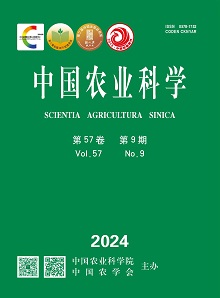【Objective】The stable quality of wheat raw grain can keep the processing technology and its parameters basically unchanged, reduce human intervention in the processing process and the loss of process adjustment, and ensure the stability of the quality of flour products. The evaluation of variety quality stability could provide the reference for processing enterprises to purchase stable quality raw grain.【Method】In this experiment, seven wheat varieties, including Shiluan 02-1, Jimai 22, Liangxing 99, Han 6172, Yingbo 700, Luyuan 502, and Gaoyou 2018, were planted in Xingtai and Handan cities from 2013 to 2019 and selected as trial samples. The coefficient of variation was used to quantitatively characterize the quality stability of varieties over multiple years and locations. The product of test weight, crude protein in grains, wet gluten content, and dough stability time was calculated, and its coefficient of variation was used as a comprehensive statistical measure of quality stability. Pairwise analysis of varieties in the same year and location was conducted to analyze the stability of their quality indicators.【Result】The fluctuation ranges of test weight, crude protein in grains, wet gluten content, dough stability time, and the coefficient of variation of the product of quality indicators were 0.06%-5.50%, 0.01%-12.21%, 0.03%-10.02%, 0.4%-138.69%, and 0.32%-140.01%, respectively. Pairwise analysis showed that the stability of test weight from high to low was Gaoyou 2018, Luyuan 502, Han 6172, Liangxing 99, Yingbo 700, Jimai 22, and Shiluan 02-1. The stability of crude protein in grains from high to low was Gaoyou2018, Han 6172, Yingbo 700, Luyuan 502, Liangxing 99, Jimai 22, and Shiluan 02-1. The stability of wet gluten content from high to low was Gaoyou 2018, Han 6172, Luyuan 502, Yingbo 700, Liangxing 99, Shiluan 02-1, and Jimai 22. The stability of dough stability time from high to low was Yingbo 700, Jimai 22, Gaoyou 2018, Luyuan 502, Han 6172, Liangxing 99, and Shiluan 02-1. The stability of the product of the above quality indicators from high to low was Yingbo 700, Gaoyou 2018, Luyuan 502, Liangxing 99, Han 6172, Jimai 22, and Shiluan 02-1. 【Conclusion】Among the tested quality indicators, test weight showed higher stability, while dough stability time exhibited lower stability. The stability of crude protein in grains and wet gluten content fell between the two. By using the coefficient of variation of the product of four quality indicators as the evaluation criterion, Yingbo 700 demonstrated higher quality stability among the trial varieties.









